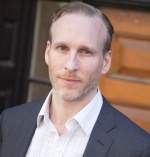Wednesday, December 17, 2014
 by Michael Hamill Remaley, SVP, Public Policy & Communications
by Michael Hamill Remaley, SVP, Public Policy & CommunicationsThis piece was originally published as the feature article for the December 2014 issue of the New York PhilanthroPost Policy Edition.
In Philanthropy New York’s work supporting the region’s many issue-based working groups on health, education, food systems, workforce and many others, and our commitment to increasing philanthropy’s attentiveness to gender, racial and other forms of diversity, we often examine many complex factors and attempt to apply a certain “lens.” It is an important part of our commitment to diversity of all forms to help our members look at their programmatic work through the eyes of populations that are often overlooked or misunderstood, especially those at the intersections of multiple forms of oppression.
But can applying a lens distort the image?
That’s a question that occurred to me during several intense and productive convenings looking at the needs, aspirations and insights of several different “vulnerable” populations, some of whom prefer not to be thought of as vulnerable at all.
At last week’s half-day conference “Serving Those Who Served,” I listened as Veterans and those who serve them talked about the specialized needs of certain Veterans. But I also heard them make the point again and again that Veterans don’t accept the term vulnerable since they, on many dimensions like education and employment, do better than the average American. That’s not to say that a portion of Veterans don’t have pronounced needs that deserve our attention, especially considering the high suicide rates of recently returning Vets and the unacceptably high rates of homelessness among older generations of Veterans. The core message was, “Yes, please apply a Veterans lens to workforce, education and health philanthropy, but don’t make pathologizing generalizations to all Veterans based on the important, real needs of a segment of that population.”
This week, Philanthropy New York hosted a fascinating program looking at new research on gender-inclusive organizing in the movement for racial equality and criminal justice reform, “Why We Can’t Wait: Lessons from Listening to Girls of Color.” Many of the leaders and participants in this discussion talked about the need to find balance between tapping the power of affected populations to tell their stories and demand their rights, while also recognizing the profound needs of individuals, some of whom struggle greatly because of past injustices and systematic oppression. And yet that oppression cannot be used to define and limit that individual or the larger demographic.
These are just two examples of many I’ve heard over the recent months about the challenges of recognizing the actual needs of certain populations – or segments of certain populations – without over-generalizing the entire population or negating strengths or potential efficacy of those who are the object of our “lens.”
A simple response to this challenge is just to say, “We need to recognize that every individual is unique, with their own history and their own potential.” But neurological and social science research tells us that human beings are programmed to generalize in order to make sense of our surroundings, and philanthropists need to make inferences about the best use of limited resources based on what is known about the populations exhibiting the greatest sets of needs. So, how do you apply a population-focused lens to grantmaking while also recognizing great variations among individuals and segments of communities?
Understanding the concept of intersectionality and recognizing the multiple factors related to vulnerability and personal efficacy are surely important. But that doesn’t mean a person who has multiple identities associated with historical oppression necessarily wants your charity or that people who come from historical privilege don’t experience their own unique barriers.
I clearly don’t have the answers to the question “How can we apply a lens that doesn’t distort?” but I know that many of PNY’s members may have insights to share that would be helpful.
I hope that you will share your thoughts with me.
